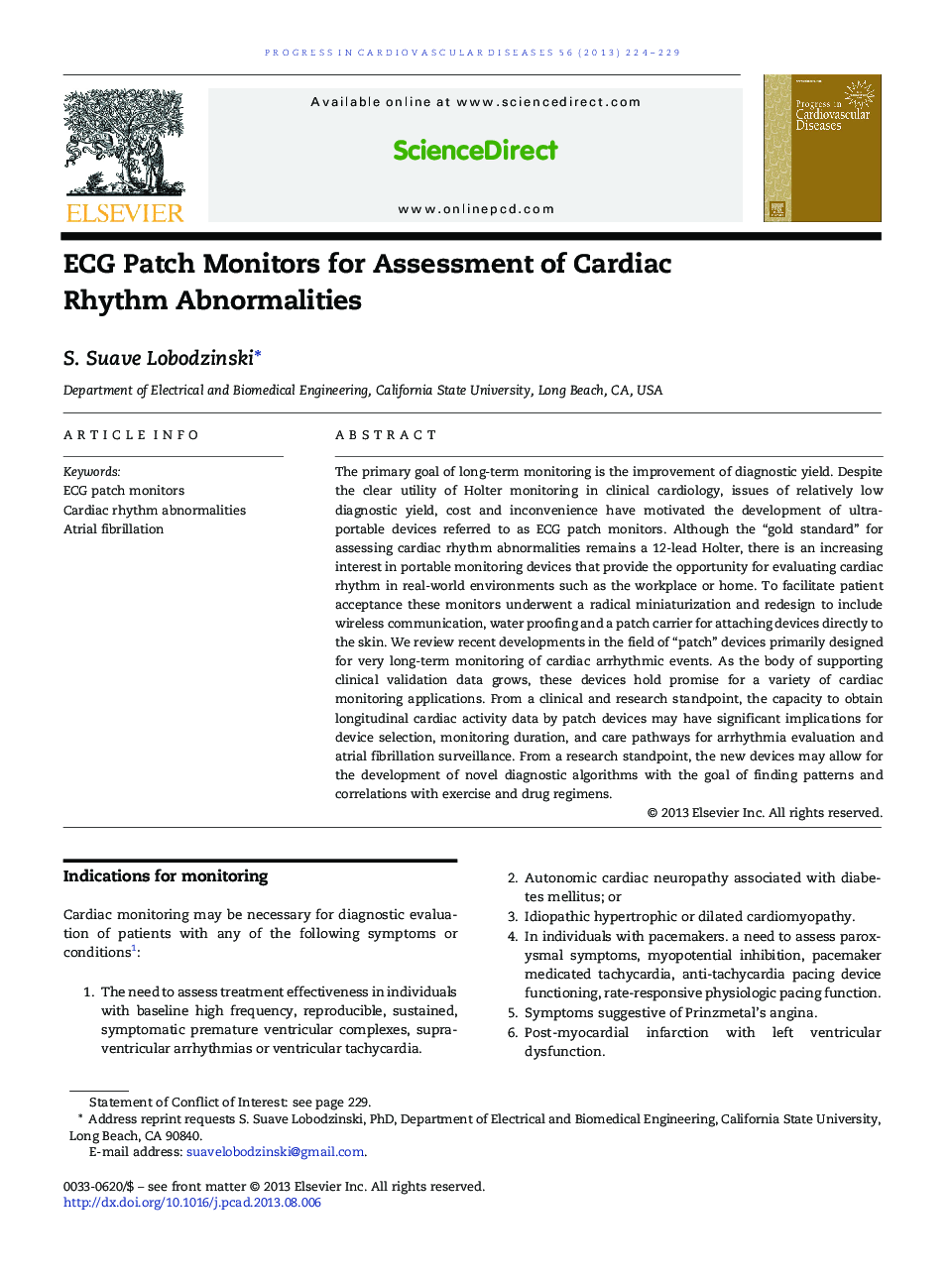| Article ID | Journal | Published Year | Pages | File Type |
|---|---|---|---|---|
| 3006410 | Progress in Cardiovascular Diseases | 2013 | 6 Pages |
The primary goal of long-term monitoring is the improvement of diagnostic yield. Despite the clear utility of Holter monitoring in clinical cardiology, issues of relatively low diagnostic yield, cost and inconvenience have motivated the development of ultra-portable devices referred to as ECG patch monitors. Although the “gold standard” for assessing cardiac rhythm abnormalities remains a 12-lead Holter, there is an increasing interest in portable monitoring devices that provide the opportunity for evaluating cardiac rhythm in real-world environments such as the workplace or home. To facilitate patient acceptance these monitors underwent a radical miniaturization and redesign to include wireless communication, water proofing and a patch carrier for attaching devices directly to the skin. We review recent developments in the field of “patch” devices primarily designed for very long-term monitoring of cardiac arrhythmic events. As the body of supporting clinical validation data grows, these devices hold promise for a variety of cardiac monitoring applications. From a clinical and research standpoint, the capacity to obtain longitudinal cardiac activity data by patch devices may have significant implications for device selection, monitoring duration, and care pathways for arrhythmia evaluation and atrial fibrillation surveillance. From a research standpoint, the new devices may allow for the development of novel diagnostic algorithms with the goal of finding patterns and correlations with exercise and drug regimens.
